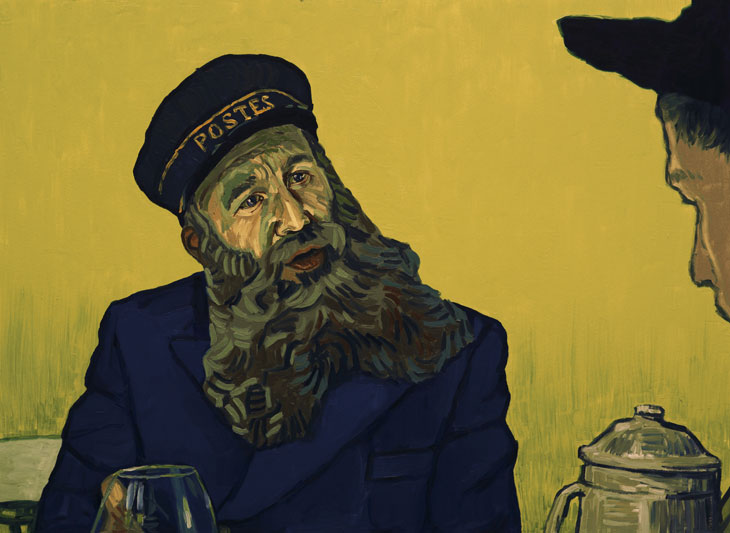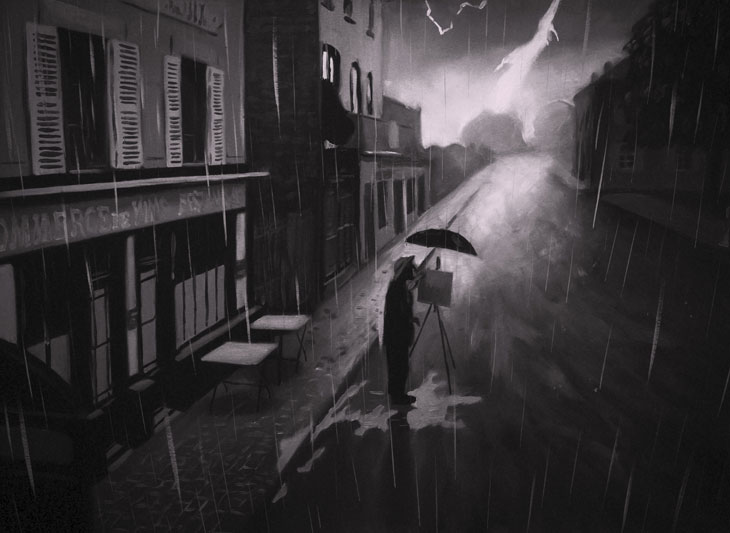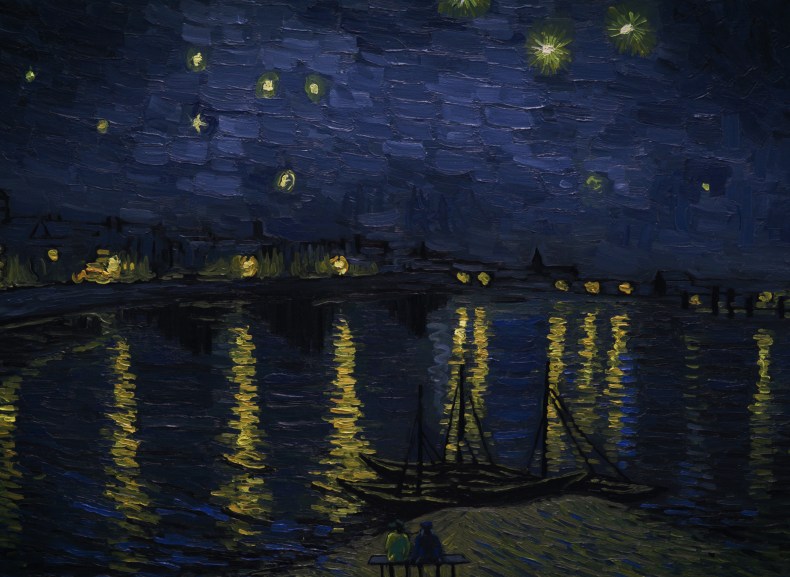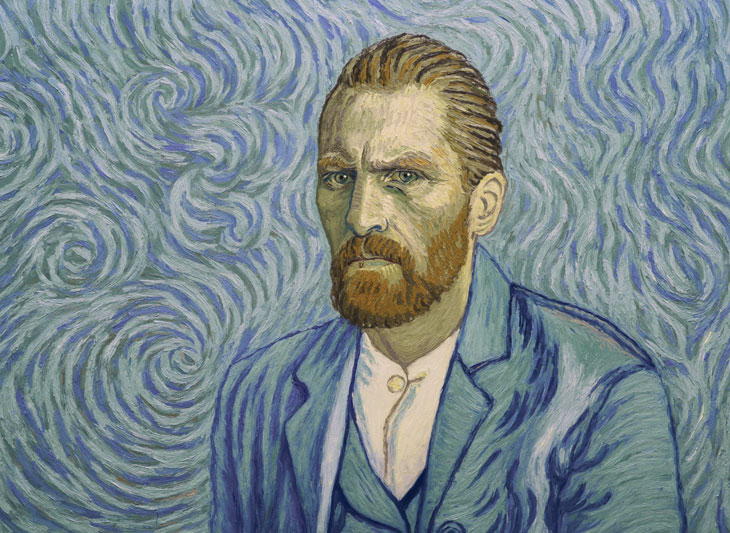Few artists’ lives lend themselves to populist film adaptations as easily as Vincent van Gogh’s. The misunderstood brilliance, the madness, the ear. Lust for Life, released in 1956, is still a masterpiece. Maurice Pialat’s Van Gogh (1991) won several awards. Most recently, directors Dorota Kobiela and Hugh Welchman roughly filmed a screenplay, then got over 100 artists to paint every frame on canvas, making it the first entirely oil-painted feature film – a brilliant undertaking that needn’t be repeated.

Postman Roulin (Chris O’Dowd).
The abundance of letters that the artist wrote and signed off ‘Your loving Vincent’ ensured he developed a close relationship with his postman: Joseph Roulin sat for various portraits, and is portrayed here by an impressively dour Chris O’Dowd. In the fiction of the film, it is his son Armand (played by Douglas Booth) who in 1891 is charged with taking an undelivered letter from the deceased artist to his brother. Armand brawls through Provence and, when he discovers Theo van Gogh died shortly after Vincent, goes in search of the artist’s doctor, Paul Gachet, in the village of Auvers-sur-Oise near Paris. Staying at the hotel where Vincent died, and speaking to a few of the locals (many of whom the artist painted), he begins to believe the death wasn’t a suicide, but a murder that he can solve.
The idea of pastiching Van Gogh’s style on such a scale promised to be problematic. One thing that set him apart from lesser artists is that he was never cultivating a style but pushing against one, always looking for a luminescent truth within his surroundings that hadn’t been captured before by artists, including him. But, from the hundreds of paintings the artist left behind, the filmmakers have distilled a mood which is recognisably and comfortingly of the artist. The effect can be stunning, especially when the paint enhances the action and natural subtleties of the actors’ faces. This is certainly the case with Helen McCrory’s portrayal of Louise Chevalier, a religious, judgemental and rather horrid housekeeper.

Vincent (Robert Gulaczyk) painting in the rain.
Loving Vincent is awash with hokey moments, too. In Arles, one character says ominously: ‘Things only got strange when his friend, that Gauguin, came!’, ushering in a black-and-white flashback in more traditional, smoother brush strokes. Another flashback has Van Gogh sketching in a Paris cafe, while his friends – artists themselves, most likely – tease him, grabbing the sketchbook out of his hand. ‘You’re always drawing, aren’t you?!’ they say. We get it. He was Vincent van Gogh. But though the script is sentimental, the visuals push the sentimentality into a level of true emotion, or at least an overload of sensation. This transformation is a testament to the power of art, and specifically Van Gogh’s. The workaday screenplay emphasises just how evocative his paintings are.
It would be different if we were asked to judge each commissioned frame on its own merits, but they come at us in a swift flurry: they’re a texture. Even so, when one of the 94 Van Gogh compositions that have been smuggled in as film stills appears, there is a delicious rush of recognition. Dr Gachet (played by Game of Thrones’ Jerome Flynn) appears in monochrome flashbacks for most of the film, until Van Gogh’s own portrait of the man from 1890 is evoked in full colour. As with the best surprises, we know it is coming, but don’t know how it will make us feel when it arrives. It’s the same with the lovingly placed motifs: the sunflowers on the artist’s grave; violet and blue streaks through golden hair; gas lamps, here and there, with their aureoles of light; or the stars that only Van Gogh can render.

Starry night over the Rhone.
For more information on Loving Vincent, click here.
Unlimited access from just $16 every 3 months
Subscribe to get unlimited and exclusive access to the top art stories, interviews and exhibition reviews.














![Masterpiece [Re]discovery 2022. Photo: Ben Fisher Photography, courtesy of Masterpiece London](http://www.apollo-magazine.com/wp-content/uploads/2022/07/MPL2022_4263.jpg)
It’s time for the government of London to return to its rightful home